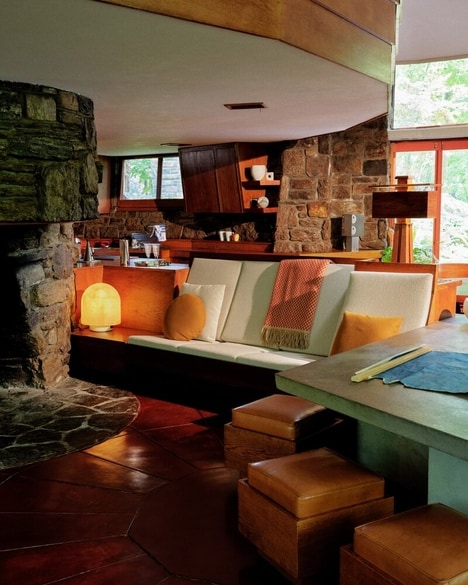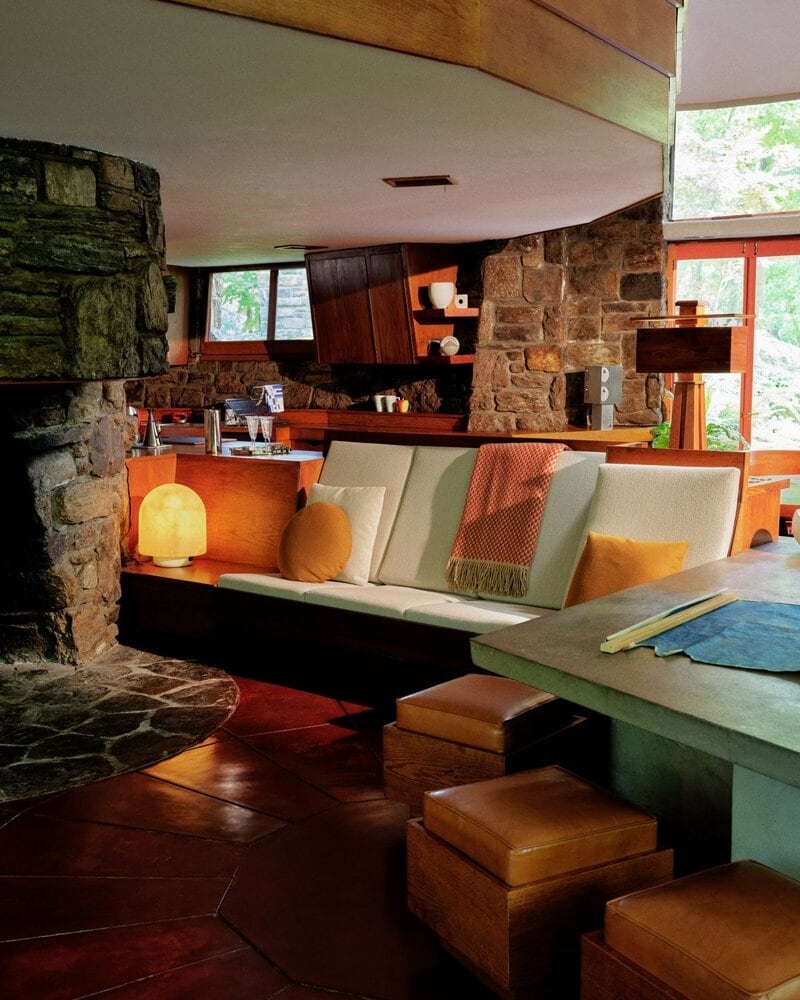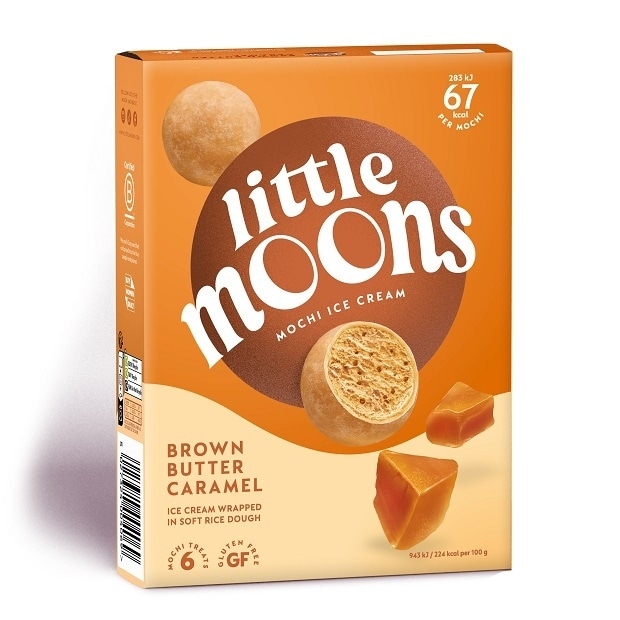
The iconic mushroom-like carport, supported by a dendriform concrete column, seamlessly integrates into the woodland setting. Inside, battered stone walls, metal-framed windows, oak built-ins, and built-in furniture create a cohesive environment that echoes Wright’s holistic design philosophy. The radial geometry extends through the floors and ceilings, infusing each room—including the “Playspace” loft—with organic symmetry.
As the first home in the Usonia II community, Toyhill exemplifies Wright’s postwar vision of affordable modern living. Its circular motifs foreshadow the form of the Guggenheim Museum, while its integration of local materials and built-in fixtures reflects Wright’s commitment to thoughtful craftsmanship. The home remains in private hands with careful preservation, embodying both historical importance and timeless architectural innovation.
Image Credit: Matthew Gordon



